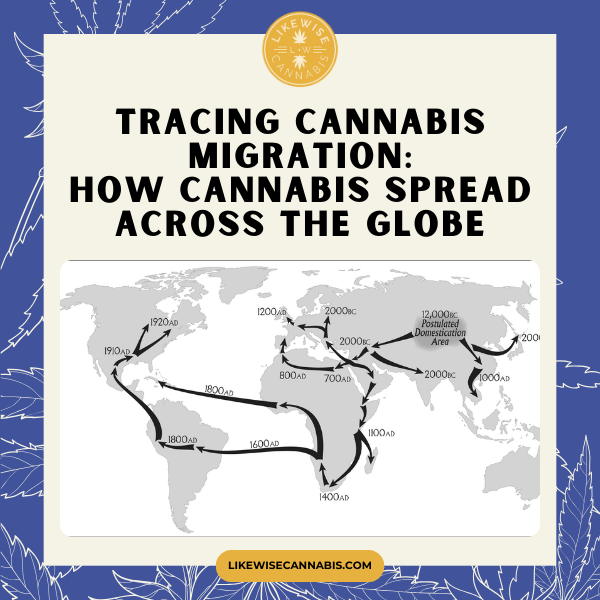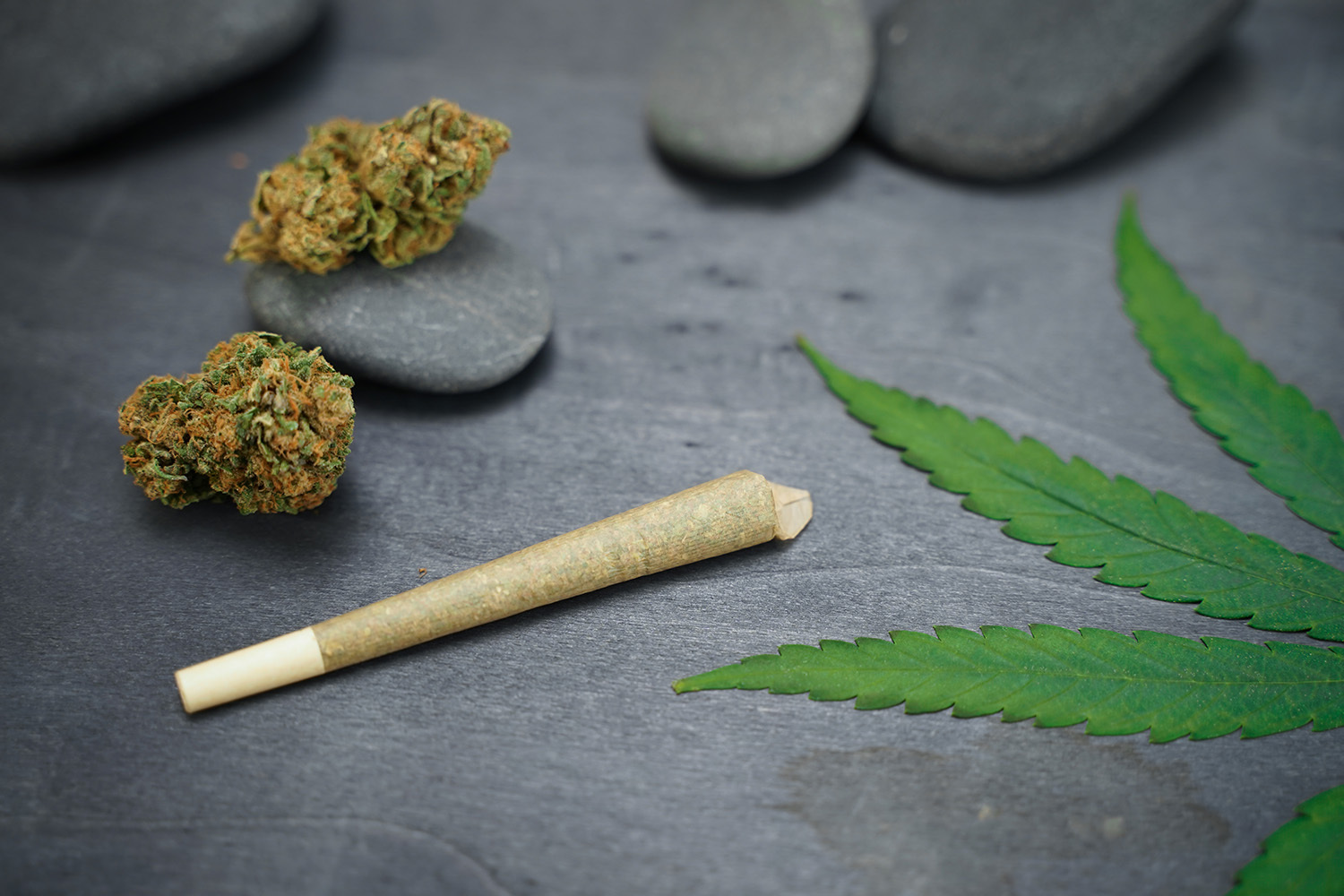In many various civilizations and ages, the plant known as cannabis, or marijuana, has been both revered and despised. Its development from a common herb to a worldwide sensation is indicative of a complicated web of social, political, and botanical strands. The roots of cannabis are explored, along with its global distribution and cultural significance, as well as the several causes that have contributed to its growth.
Cannabis’s Historical Background
It is thought that cannabis originated in parts of what are now southern Siberia and Mongolia in Central Asia. The plant is among the oldest cultivated crops, with a history spanning over 10,000 years. Based on archeological data, it appears that ancient societies utilized cannabis for its psychotropic effects as well as for utilitarian uses, such as weaving ropes and textiles.
Around 4000 BC, the earliest known use of cannabis was in ancient China. After using cannabis seeds for food for a while, the Chinese eventually realized that the plant also had therapeutic benefits. Often hailed as the founder of Chinese medicine, Emperor Shen Nung is reported to have prescribed cannabis as part of his pharmacopeia to cure conditions like rheumatism, malaria, and gout.
Cannabis Use in the Past
Cannabis spread throughout Asia, the Middle East, and beyond as trade routes grew. About 500 BC, a nomadic Indo-European tribe known as the Scythians is credited for bringing cannabis to Europe and the Middle East. The ancient Greek historian Herodotus described the custom of the Scythians, who threw hemp seeds upon hot stones to produce a mist that caused a kind of intoxication.
Cannabis was used for both recreational and medical purposes throughout the Middle East. Within Islamic society, where alcohol was typically forbidden, it found a specific niche. The vast trading networks of the Islamic Golden Age contributed to the rapid spread of cannabis use throughout the Arabian Peninsula and North Africa.
The Americas’ Extension
Colonialism from Europe brought cannabis to the Western Hemisphere. The non-psychoactive strain of the cannabis plant known as hemp was a significant crop used to make clothes, ropes, and sails. In the 1500s, the Spanish introduced cannabis to South America, where it quickly established itself as a vital crop for the colonial economy. It then made its way to North America, where numerous colonial estates grew it.
Up until the early 20th century, cannabis use for recreational purposes was comparatively uncommon throughout the Americas. Marijuana first gained prominence in American culture during the Mexican Revolution of 1910, when immigrants from Mexico who were trying to escape the unrest carried cannabis with them for recreational use.
Cannabis and the Opposition
The 1960s and 1970s were a significant turning point for cannabis use in the United States and most of Western civilization. As a symbol of defiance against the establishment and accepted social mores, the counterculture movement embraced marijuana. The era’s influential literature, art, and music promoted and popularized cannabis usage by associating it with a free-spirited, peaceful, and loving way of life.
International Impact and Legal Conflicts
Cannabis was very popular, but there were a lot of legal obstacles. The Marihuana Tax Act of 1937 essentially made marijuana illegal in the United States, and the Controlled Substances Act of 1970 further cemented this status by designating marijuana as a Schedule I narcotic, ostensibly having little therapeutic value and a high potential for misuse. Influenced by international accords like the 1961 Single Convention on Narcotic Drugs, similar laws were passed all across the world.
Medical Legalization and Rediscovery Movements
The medical view of cannabis saw a rebirth in the late 20th and early 21st centuries. Cannabinoids are the active ingredients in cannabis that have been shown to have therapeutic potential through scientific studies. As a result, laws and public opinion gradually changed, and nations like Uruguay, Canada, and portions of the US began to decriminalize or legalize marijuana usage for both medical and recreational purposes.
Contemporary Legalization and International Trade
The legalization of cannabis is a fast-moving target in the twenty-first century, affecting not just societal perceptions but also global economic systems. In North America and Western Europe, where more states and nations are legalizing cannabis for both medical and recreational purposes, this change is particularly noticeable. A growing business devoted to cannabis production, product innovation, and retail has been spurred by the legalization movement.
States like Colorado, Washington, and California have taken the lead in the US in fully legalizing marijuana and putting in place extensive regulatory frameworks for its sale and use. Other states have been inspired to follow suit by these states’ notable economic gains, which include higher tax collections and the creation of jobs.
Europe has also witnessed a change, with nations like the Netherlands long leading the way in cannabis tolerance thanks to their decriminalization initiatives. In recent times, nations like Portugal and Spain have investigated decriminalization and legalizing policies, indicating a rising belief throughout Europe that the war on drugs can be more detrimental than the actual substance.
Cultural Changes and Their Effects on Society
The stigma associated with cannabis usage is progressively fading as it becomes more accepted in mainstream society. This shift in culture is evident in the media, which is portraying cannabis use in a more positive and open way, as well as in the healthcare sector, where cannabis is being accepted as a valid treatment for a number of ailments, including as PTSD, epilepsy, and chronic pain.
The legalization movement is not without its difficulties and disagreements, though. The social ramifications of legalization are still being discussed; issues raised include juvenile access, public health, and the possibility of higher consumption. Furthermore, significant concerns about social equality have been brought up by the legal cannabis market, notably in relation to the erasure of criminal records and the disproportionate harm that cannabis prohibition causes to minority populations.
Economic Effects of Sector Development
According to some predictions, the cannabis business is expected to develop significantly over the next ten years, reaching billions of dollars. The development of sophisticated cannabis products, including as edibles, concentrates, and therapeutic treatments, is driving this rise in addition to rising consumer demand.
The growth of the sector is also stimulating innovation in other fields, like as agriculture technology, where businesses are creating more productive production methods, and pharmaceuticals, where scientists are investigating novel medical uses for cannabinoids. Furthermore, the popularity of cannabidiol (CBD), a non-psychoactive ingredient in cannabis, has given rise to a whole new industry segment focused on wellness, with CBD appearing in everything from cosmetics products to dietary supplements.
Global Views and the Future Direction
The legal status of cannabis varies greatly between countries. While Uruguay and Canada have legalized cannabis completely, other nations still have strong bans in place. Because of this discrepancy and the worldwide nature of trade and travel, it presents difficulties for both law enforcement and international relations.
The finest models for legalizing and regulation, more research into the affects and benefits of cannabis, and continuous conversations about the social and economic ramifications of legalization are probably all part of the future of cannabis. As more nations contemplate loosening their cannabis regulations, collaboration and international agreements will be essential in forming a unified worldwide strategy.
Cannabis’s widespread use around the world is evidence of its adaptability and continuing appeal. Its transformation from an antiquated crop to a contentious narcotic and back again, to a material that is now accepted as both therapeutic and recreational, is indicative of broader changes in public perceptions of drugs and drug laws. Even as the whole community struggles with these problems, the cannabis tale continues to be a powerful illustration of how political, cultural, and economic factors influence how we handle and utilize plants that have been a part of human history since the beginning of time. In addition to highlighting shifting societal values, the continuous evolution of cannabis laws and attitudes also reflects a deeper understanding of social well-being and human health.
The history of cannabis is one of an old plant entwined with the laws, economies, and cultures of humans. Marijuana has served as both a medical herb and a symbol of countercultural resistance since its roots in Asia and its spread across continents. The voyage of cannabis not only illustrates its adaptability and tenacity but also the complicated and shifting views of society toward this mysterious plant as laws and perceptions continue to change.
The state of medical marijuana in Oklahoma has changed significantly in recent years. Patients now have access to a broad variety of cannabis products through numerous dispensaries around the state, including in major areas like Oklahoma City (OKC), Stillwater, and Edmond, thanks to a strong regulatory framework in place. If you’re looking for a dispensary near me or more specialized services like a drive-thru dispensary, Oklahoma has an amazing selection to meet your needs.
Oklahoma’s Growing Dispensaries
Oklahoma’s medical marijuana program has been a great success, resulting in the opening of many dispensaries throughout the state. There are several options available for anyone looking for OKC dispensaries or Oklahoma City dispensaries, with establishments renowned for their high-quality goods and first-rate customer support. Similar to this, doing a search for Stillwater dispensary or Edmond dispensary turns up a number of options, each of which sells distinctive cannabis strains and goods.
What to Anticipate From a Dispensary Visit
If you look for a cannabis dispensary near me or a marijuana dispensary near me, you’ll probably find a few possibilities in your area. Depending on state regulations, these dispensaries offer everything from medical marijuana to recreational cannabis, ranging from small boutique shops to bigger chain sites. When you visit a dispensary, you may typically check in with your medical marijuana card, if necessary, and speak with the experienced staff to choose which products are appropriate for your needs.
Features and Services: Drive-Thru to Offers
The drive-thru dispensary service is one of the cutting-edge features that certain dispensaries provide. For individuals who are pressed for time or have mobility concerns, this easy option—similar to the dispensary with a drive-thru in Stillwater or OKC—allows customers to purchase cannabis without getting out of their cars. Furthermore, a lot of patients search for the best dispensary deals near me. To make their goods more inexpensive, many Oklahoman dispensaries provide daily specials, loyalty programs, and discounts. This is especially helpful for people who rely on medicinal cannabis for chronic diseases.
Wide Range of Items
Oklahoma dispensaries have a wide selection of cannabis items, whether you’re looking for weed for sale or something else entirely. This comprises topicals, tinctures, edibles, flowers, and more. To meet a variety of medicinal demands, each product has varying amounts of THC and CBD. The staff at dispensaries like those in Stillwater and Edmond can help you choose the correct product and dose if you’re new to cannabis.
Top Dispensaries & Deals on Cannabis
If you’re looking for something particular, like best dispensaries, weed dispensary near me, or marijuana deals, check out the web ratings and reviews. Numerous customers offer their firsthand accounts of the best dispensary deals or best dispensaries in Oklahoma, offering valuable perspectives on the caliber of the marijuana merchandise and the level of customer support.
Safe and Authorized Access
Oklahoman dispensaries are required by law to abide by state regulations, which means they can only sell to people who have a medical marijuana license. By preserving high standards, this regulation helps guarantee that patients obtain safe and effective goods from the medical marijuana dispensary community.
Final Thoughts
Dispensaries near me is becoming a typical query for both locals and tourists as the cannabis sector in Oklahoma is flourishing. The state provides a plethora of possibilities, from weed deals to medical marijuana dispensaries near me. Finding a respectable dispensary is simple whether you’re in Edmond, Stillwater, Oklahoma City, or any other part of the state; all of them work hard to provide the greatest goods and services to satisfy the wide range of needs of their patrons. The proliferation of dispensaries similar to those in Oklahoma serves as evidence of both the growing acceptance of cannabis and its significance as a therapeutic aid for a large number of people.








